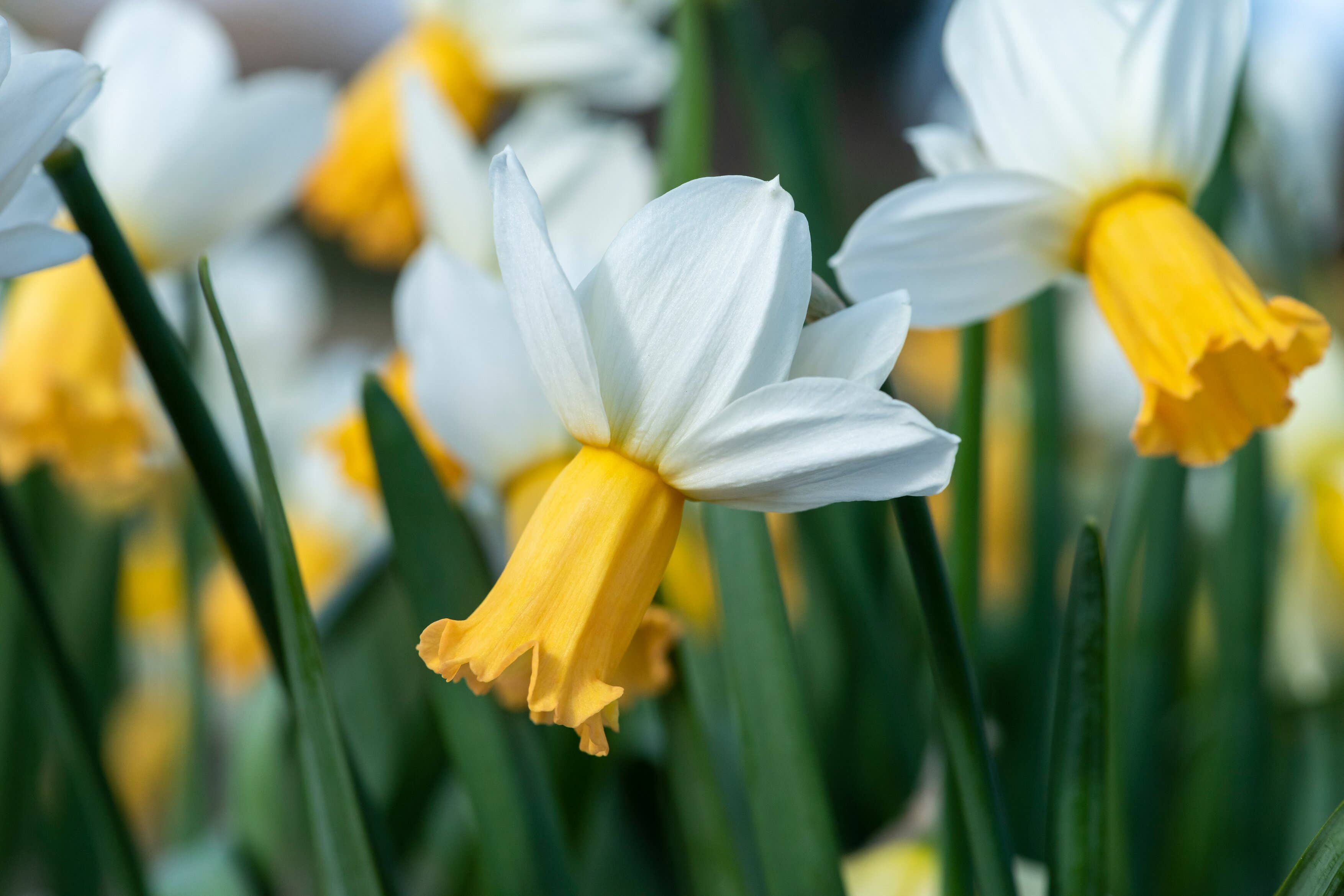These are the best shorter daffodils to plant now for spring, according to RHS trials
Find out what types of daffodils offer the most flowers, scent and resilience

It’s time to plant spring-flowering daffodils. But which do you choose if you want shorter varieties which will easily slot into pots among other favourites, or provide a splash of colour in a raised bed or rockery?
The RHS has just announced the results of its garden trials of shorter daffodils, with the top 12 receiving the prestigious RHS Award of Garden Merit (AGM). Here are five of the best…
1. Narcissus ‘Tête Bouclé’
This dwarf, double daffodil grows to 15cm, flowering in early to mid-spring. The flowers are a mass of petals in two shades of yellow.
Trials forum comments: Superb. Fully double flowers of good substance. Highly impactful, upright and tidy. Masses of flowers both years of the trial. Also makes a good pot plant.
Plant combinations: This little double daffodil will look good in pots on its own or ideal for mixing with violas, which also have a low habit. In borders, it can follow snowdrops, ideally at the front where its fine habit can be seen. Like all small bulbs, it sits well in plantings of Mediterranean plants such as lavender and thyme, and also small hebes.
2. Narcissus ‘Moonlight Sensation’
This clump-forming daffodil grows to 30cm high, with slightly grey-green, strap-shaped leaves. Flowers are scented, around 7cm across, opening light yellow and fading to creamy white, with up to six flowers to each stem.
Trials forum comments: Looks great, healthy with masses of flowers. Multi-stemmed bulbs. Good garden plants and a good pot subject. Strongly scented.
Plant combinations: A ‘Thalia’ bulb (multi-headed trumpet daffodil), suits larger containers, ideally on its own as the foliage will overpower other plants. A clump looks beautiful in a pot in a conspicuous place. They don’t usually naturalise very well, so this works best in borders where it has the stature to associate with roses and herbaceous perennials. Place further back where its foliage can die back gracefully.
3. Narcissus ‘Winter Waltz’
A clump-forming daffodil reaching around 30cm, with green, strap-shaped leaves. Flowers are lightly fragranced and upward facing, with slightly swept-back white petals and a long, apricot-orange cup turning paler over time, appearing from February to March. Ideal for the front of a border or in pots and containers.
Trials forum comments: Has impact and stands out. Flowers held above the foliage, unusual apricot trumpets, fading over time. Lightly scented. Useful for front of the border or in pots.
Plant combinations: These ‘Cyclamineus’ daffodils with reflexed petals are graceful and flower early so are very welcome. The pale yellow of this bulb would associate very well with the veteran ‘February Gold’. It is a bulb for beds and borders planted where it can die back behind a screen of perennials, ideally towards the front though, as it has fruity scent. It is a little on the tall side for containers in a windy garden but will do well in shelter, ideally with a pot to itself.
4. Narcissus ‘More and More’
A compact bulbous perennial which grows to around 20cm tall producing two or more bright yellow and upward-facing scented flowers on each stem in mid-spring.
Trials forum comments: Fantastic! A late flowerer, flowering well. In proportion. Helps to extend the season. Very sweetly scented. Prefers alkaline soil.
Planting combinations: This dainty miniature daffodil is very well suited to planting in small pots on patios or can be brought in for decoration while it flowers. It suits rockeries and raised beds planted with other little gems, saxifrages and grape hyacinths, for example. Although too delicate for larger borders, it is suitable to mix with low growing shrubs such as lavender, small hebes and santolina.
5. Narcissus ‘Yellow Sailboat’
A clump-forming, late-flowering bulbous perennial to around 30cm in height, with green, strap-like foliage and reflexed bright yellow fragranced flowers which appear late April.
Trials forum comment: Superb display. Sherbet, soft lemon yellow flowers, one to three heads per stem and some bulbs with eight stems. Sweetly scented.
Planting combinations: This is a good choice for borders, where it can be appreciated up close for its scent and delicacy. Plus it’s on the late side, prolonging the daffodil season. Mix with similar narcissi, such as the established white flowered ‘Sailboat’ or other jonquil narcissi. For containers, plant on its own and use a taller container to better appreciate its scent.
The other AGM-winning shorter daffodils from the trial include ‘Angel’s Whisper’, ‘Crofty’, ‘Englander’, ‘Snipe’, ‘Chappie’, ‘Medway Gold’ and ‘Tiny Bubbles’.
How to grow them
The RHS advises:
1. Ideally, plant between mid-September to November. This allows the bulbs to put out roots well before the temperatures drop in winter.
2. Plant them twice the depth of the bulb, or three times the amount if you have sandy soil. Some bulb species are very tiny and can be planted at a greater depth.
3. If growing in containers, the bulbs can be packed tightly together, halfway down the pot.
4. After planting, water them well.
5. After flowering, leave the leaves for six weeks.
6. Remember they need nothing more than garden soil (unless in pots when peat-free potting compost is used), good drainage, and lots of rain when growing and flowering.


